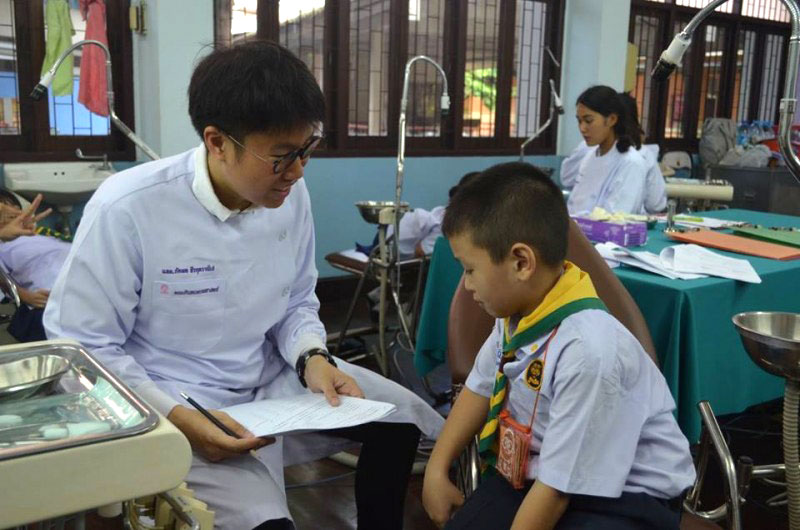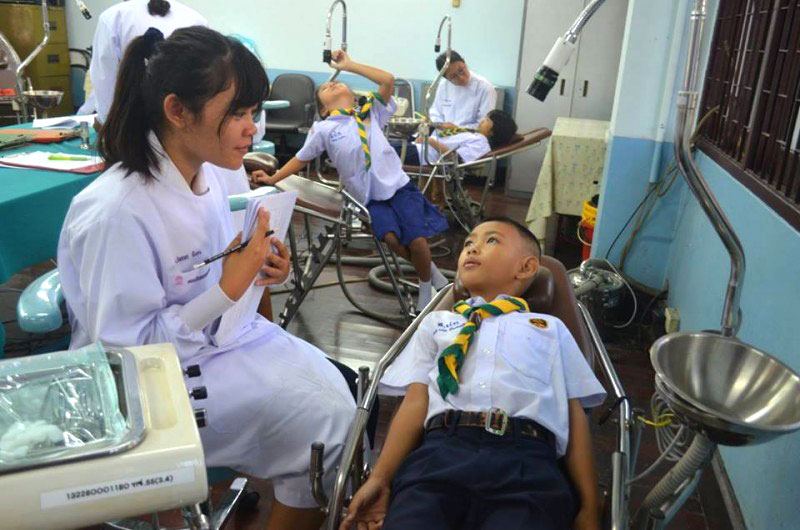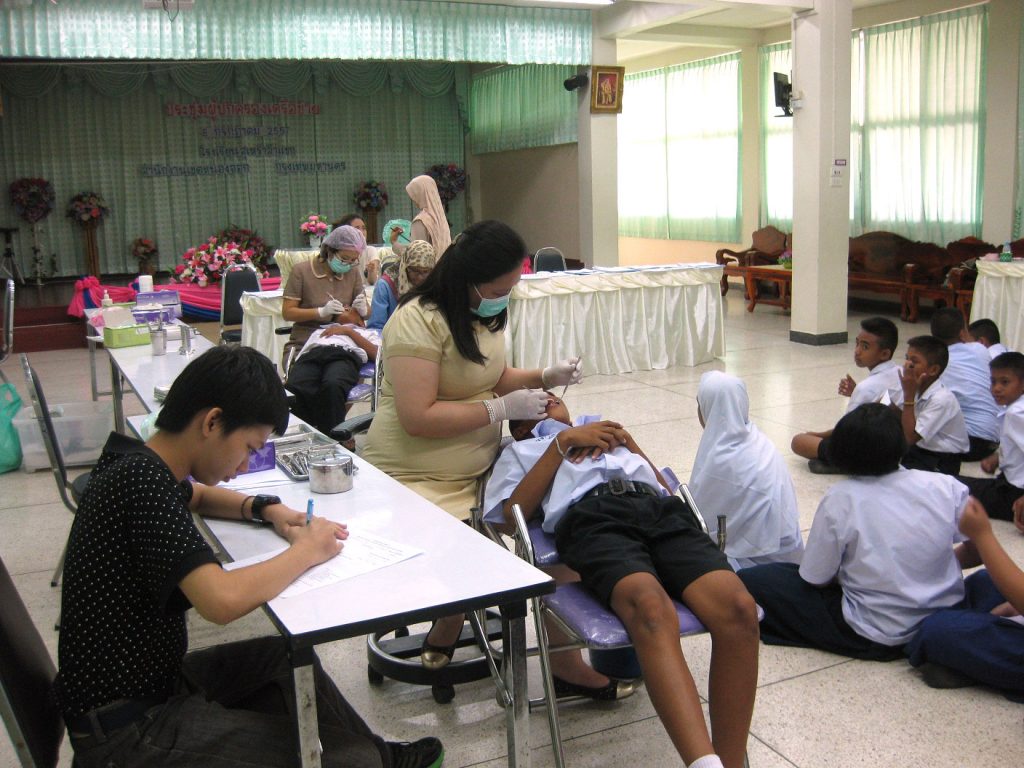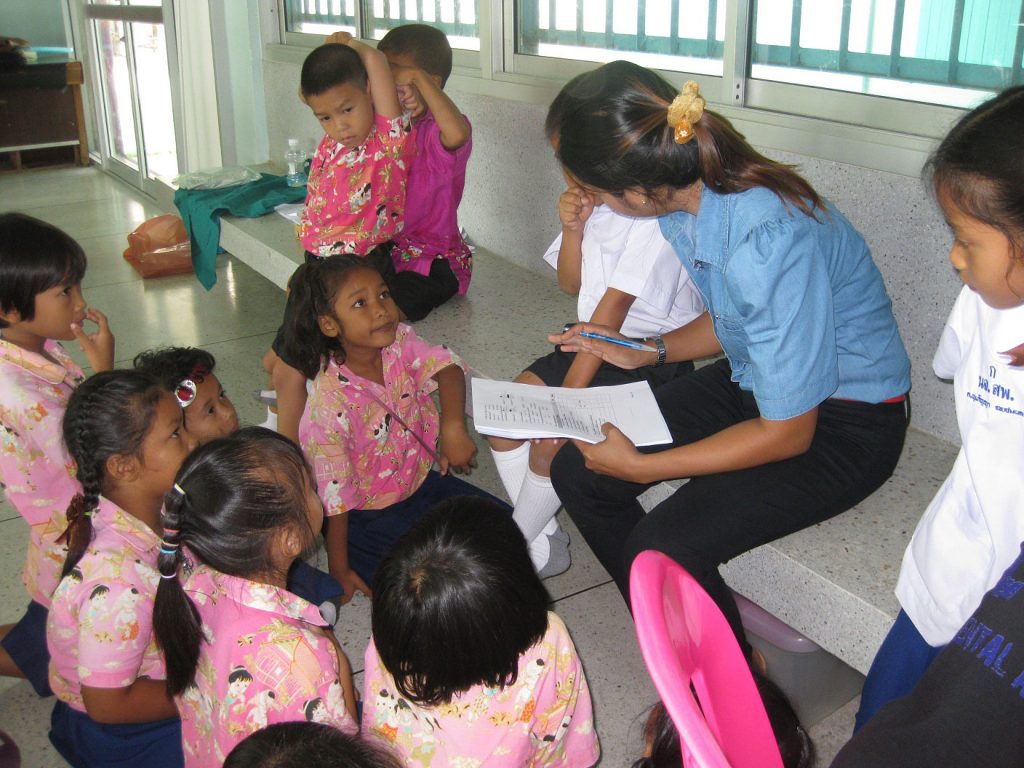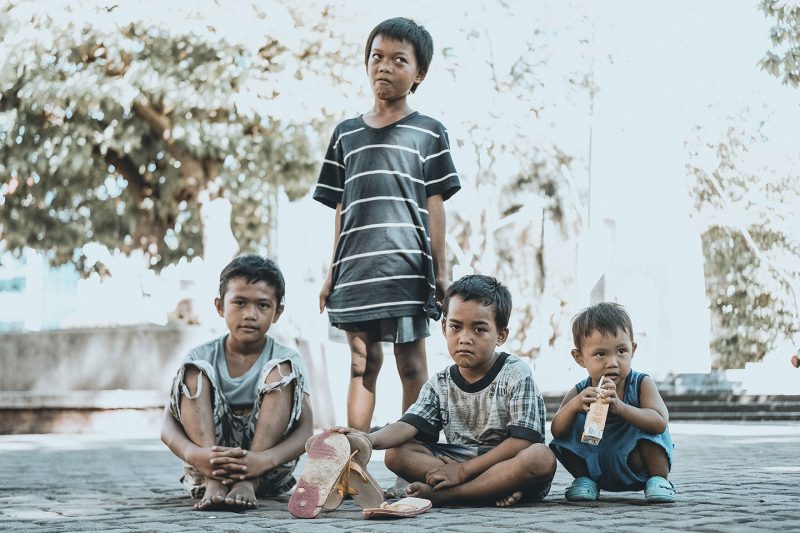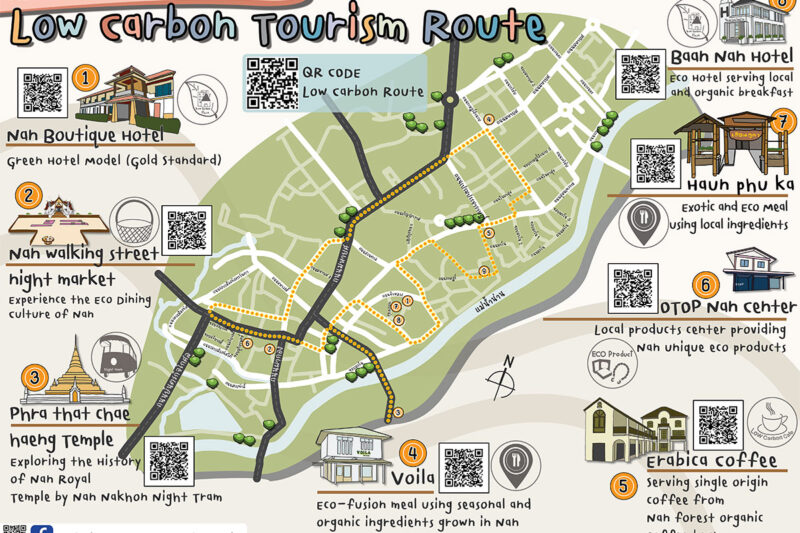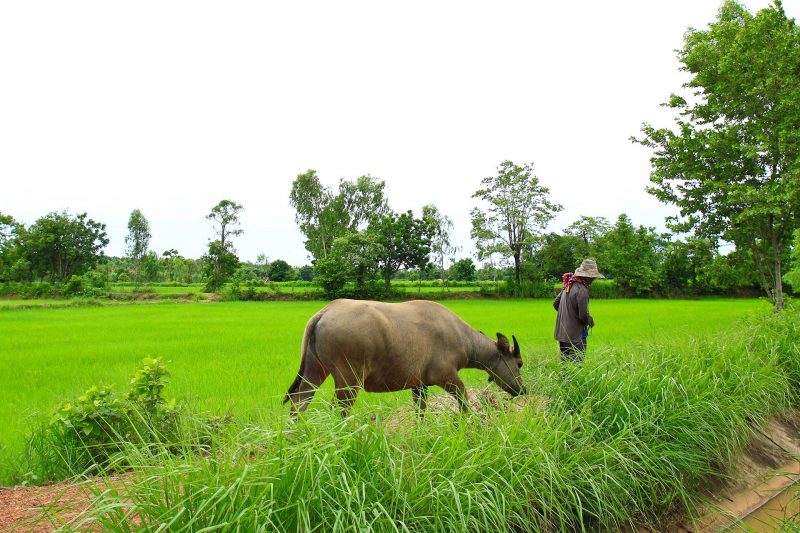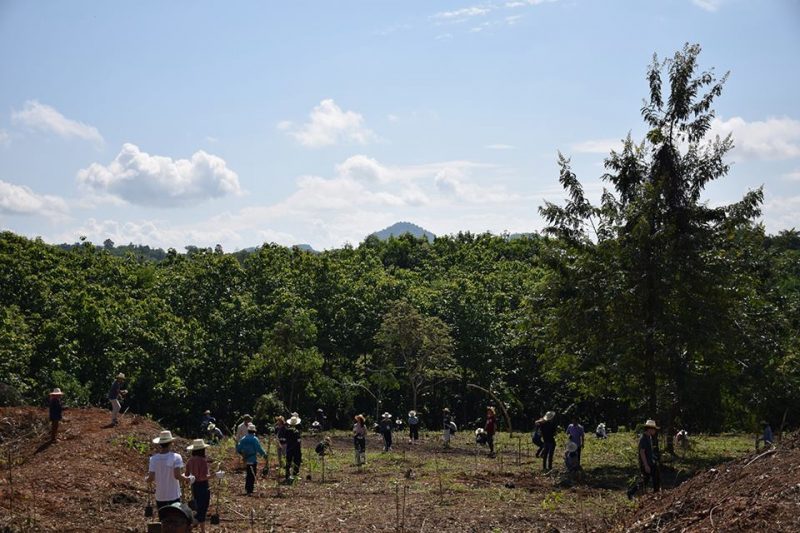Practical Community Dentistry : Oral and dental health care for Thai children
Even thought Thailand’s birthrate has been dropping to under 600,000 per year since 2019, there are more than 7 millions youth population that the government still has to take care of their health. According to the tooth decay in Thai youth survey, the average tooth decay is common among the 9 months old and the average tooth decay of 3 tooth per person among the 3 years old. The main reason of tooth decay is inappropriate parenting, for example, giving sweets to their children regularly, let their children sleep with the feeding bottle after teething, or ignoring their oral health by not teaching their children to brush their teeth after their first teething. Tooth decay in the youth can cause more serious oral problems in the future like having a toothache and unable to have a proper meal which will affects their growth or fore them to have fewer quality sleep which affects their education. All of this has a serious effect on children’s life by interrupting their body and mental development. Furthermore, children with their baby tooth decay are more likely to have a permanent tooth decay because their baby tooth decay contains the pathogen that likely cause decay in the new upcoming set of teeth.
[Source: https://multimedia.anamai.moph.go.th/help-knowledgs/kid-and-decay-tooth/ ]
The Faculty of Dentistry, Chulanlongkorn University has a Practical Community Dentistry Course that has always been improves and develops since 2017. The 5th year students are helping the educational institutions that lack access to a good dental treatment along with educating parents about the proper dental health care [http://www.dent.chula.ac.th/community-dentistry/index.php ]
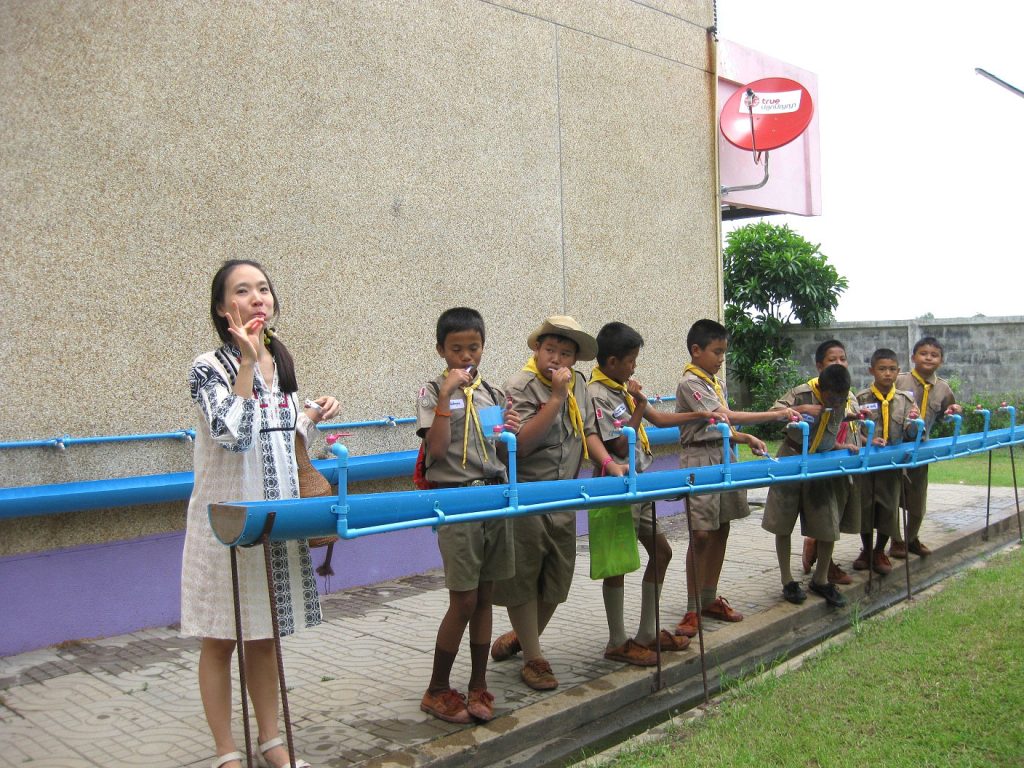
About a hundred of the 5th year dental students who takes the Practical Community Dentistry Course II are separated into group of 5 for 20 groups in order to organize various proactive activities, for example, dental checkups, teeth brushing training, dental sealant, fluoride treatment and tooth discoloration treatment to more than 1,200 students and teachers per year in 9 educational institutions in Bangkok which are Wat Pathum Wararam School, Pathom Nonsi School, Wat Hua Lumphong School, Pirayanavin School, Wat Prapachai School, Wat Sommanat School, Wat Chaichana Songkram School, Rajvithi Home for Girls, Baan Phrapond (House of Blessing Foundation). Moreover, about 550 children with urgent dental treatment are brought to the university for a proper treatment during the year 2013-2019.
During the COVID-19 Pandemic, the faculty of Dentistry has adapted to the situation by using online platform. Starts from educating parents from 20 families of the Nontri School by teaching techniques of dental care after the parents’ work hours. Due to positive feedbacks, the activity’s goal is set to cover another 6 schools in the 2023.
20 groups of the 6th year dental students that take Practical Community Dentistry III will organize proactive activities for elders and children in small communities around the country with 10 groups a month for 5 weeks under the supervision of the dentists in each community and the provincial public heath office. The practical trainings are:
1) Lay a strong healthy foundation for the community in long term by using all the methods from finding problems, analysing the community potential, design and test the resolution and evaluating.
2) Let the community get involve by listening to the community and try to apply rules and regulations in order to develop the community.
3) Educate the community with the right knowledge, skills, mindsets and environment for healthy lifestyle in many levels which are:
- Center for Child Development creates regulations prohibiting the use of milk bottles. Fruit is the only food that children are permitted to bring. They took away sweets that were either not to be eaten or brought together for all of the children to consume at the same time or set meal timings and alter food products to be more healthful. There is a management and control system in place to ensure that all children wash their teeth on a daily basis. By arranging the budget with the local government, they can repair or create a teeth brushing tub. Moreover, there is also a singing teeth brushing activity in child’s everyday routine. Brushing your teeth while they’re dry is a good habit to get into. It increases the efficacy of tooth decay prevention and make changes to the snack foods provided in after-school carts to make them healthier.
- Schools: Brushing teeth at the same time is organized in schools. Make sure there’s adequate room for each youngster to clean their teeth. To be a positive role model, assign instructors to clean their teeth with the youngsters. Make healthful changes to the snacks and drinks sold at school. Reduce the amount of sugar in the drink. Make sure you don’t have any food in your bag. In the classroom, there is sweet water. It’s only permitted to drink simple water.
- Village: Due to residents’ consent, the village has changed the beverages that are made for sale to include less sugar. Give certification labels to establishments that sell low-sugar drinks. Together with temples and beverage stores, they are pushing for water offerings and building the ability of village health volunteers (VHVs) to oversee young children’s brushing at home. Campaign to effectively introduce a new approach for the community to wash their teeth before night.
- Organizational units and factories: adjust the sugar content of the beverages offered by categorizing them as low or high sugar. There is a sign that encourages you to select the low-sugar option. For the beverages made separately, there is a label to select a less sweet level. Increase the number of low-sugar drinks. To minimize alcohol consumption, make a common agreement. In the organization’s coffee corner and at every meeting of the local administrative organization, there is a three-in-one coffee rejection policy.
- Schools for elders: Brushing should be included in your senior’s daily routine. Make sure there are adequate locations for cleaning teeth. Make sure only the low-sugar beverages are distributed.
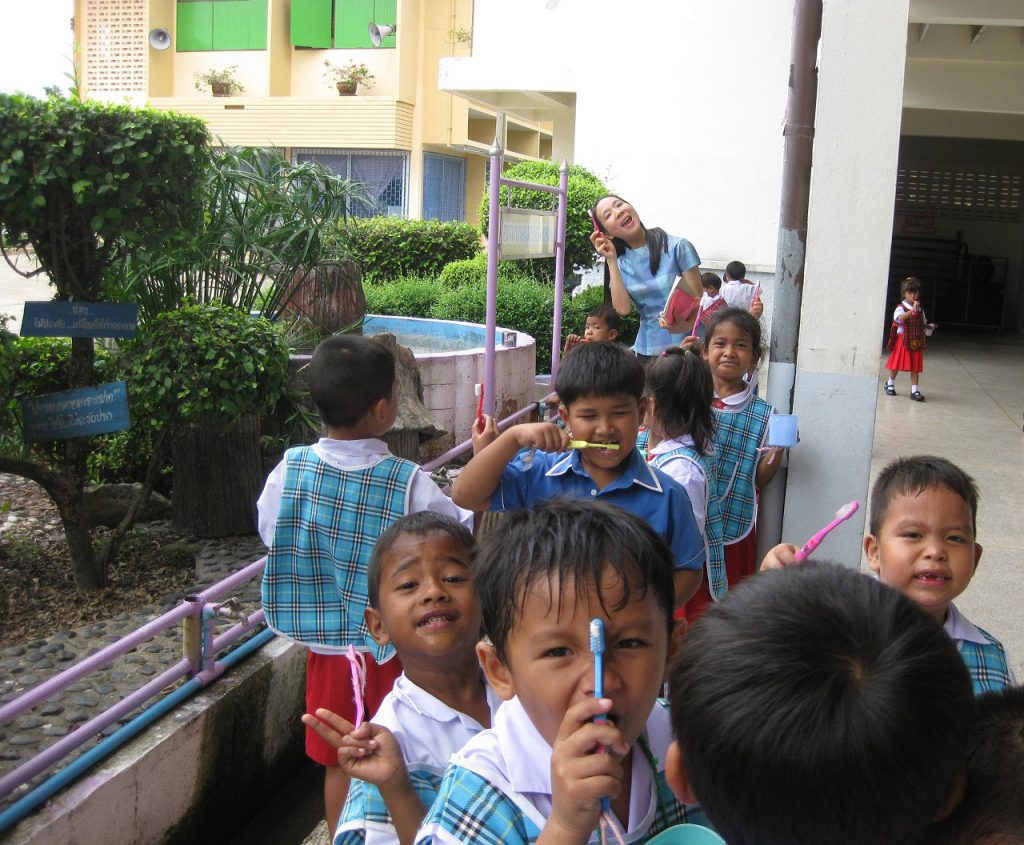
BY
Faculty of Dentistry, Chulalongkorn University
Others
Learning Curve Toward Service
Veterinary student volunteers gain hands-on appreciation of rural life
Reviving Nan’s Forests
Sustainable forest conservation project creates healthier communities and builds green awareness

